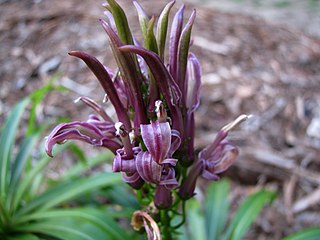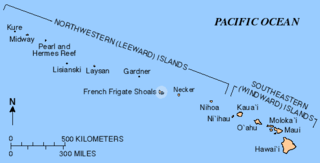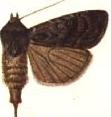Located about 2300 miles (3680 km) from the nearest continental shore, the Hawaiian Islands are the most isolated group of islands on the planet. The plant and animal life of the Hawaiian archipelago is the result of early, very infrequent colonizations of arriving species and the slow evolution of those species—in isolation from the rest of the world's flora and fauna—over a period of at least 5 million years. As a consequence, Hawai'i is home to a large number of endemic species. The radiation of species described by Charles Darwin in the Galapagos Islands which was critical to the formulation of his theory of evolution is far exceeded in the more isolated Hawaiian Islands.

The Hawaiian lobelioids are a group of flowering plants in the bellflower family, Campanulaceae, all of which are endemic to the Hawaiian Islands. This is the largest plant radiation in the Hawaiian Islands, and indeed the largest on any island archipelago, with over 125 species. The six genera can be broadly separated based on growth habit: Clermontia are typically branched shrubs or small trees, up to 7 metres (23 ft) tall, with fleshy fruits; Cyanea and Delissea are typically unbranched or branching only at the base, with a cluster of relatively broad leaves at the apex and fleshy fruits; Lobelia and Trematolobelia have long thin leaves down a single, non-woody stem and capsular fruits with wind-dispersed seeds; and the peculiar Brighamia have a short, thick stem with a dense cluster of broad leaves, elongate white flowers, and capsular fruits.

Agrotis is a genus of moths of the family Noctuidae. The genus was erected by Ferdinand Ochsenheimer in 1816. A number of the species of this genus are extinct.
The poko noctuid moth was a moth in the family Noctuidae. The species was first described by Arthur Gardiner Butler in 1881. It is now an extinct species.

Kerr's noctuid moth was a species of moth in the family Noctuidae. It is now extinct.

The Laysan noctuid moth was a species of moth in the family Noctuidae. This species is now extinct.

Agrotis photophila, the light-loving noctuid moth, was a species of moth in the family Noctuidae. It was endemic to Oʻahu, Hawaiʻi, United States.

The Procellaris grotis noctuid moth was a species of moth in the family Erebidae. This species is now extinct.
Agrotis cremata was a moth in the family Noctuidae. It is now presumed extinct.
Agrotis melanoneura was a moth in the family Noctuidae. It is now an extinct species.

Agrotis microreas was a moth in the family Noctuidae. It is now an extinct species.

Agrotis panoplias was a moth in the family Noctuidae. It is now an extinct species.

Agrotis mesotoxa is a moth of the family Noctuidae. It is endemic to Kauai, Maui and Hawaii.

Agrotis epicremna is a moth of the family Noctuidae. It is endemic to Kauai, Molokai, Maui and East Maui.
Agrotis ceramophaea is a moth of the family Noctuidae. It was first described by Edward Meyrick in 1899. It is endemic to the Hawaiian islands of Kauai and Hawaii.
Agrotis charmocrita is a moth of the family Noctuidae. It was first described by Edward Meyrick in 1928. It is endemic to the Hawaiian islands of Kauai and Molokai.
Agrotis dislocata, the lesser native cutworm, is a moth of the family Noctuidae. It was first described by Francis Walker in 1856. It is endemic to the Hawaiian islands of Niihau, Kauai, Oahu, Molokai, Maui, Lanai, Hawaii and Laysan.
Agrotis xiphias is a moth of the family Noctuidae. It was first described by Edward Meyrick in 1899. It is endemic to the Hawaiian islands of Kauai and Maui.
This page is based on this
Wikipedia article Text is available under the
CC BY-SA 4.0 license; additional terms may apply.
Images, videos and audio are available under their respective licenses.






